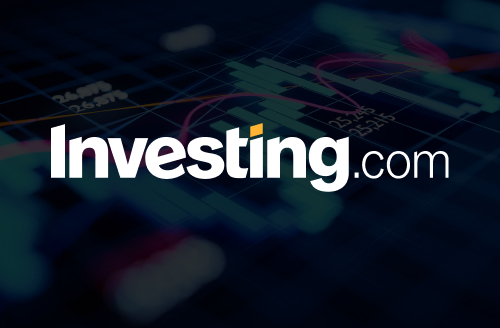
Near the end of 2022, a reader wrote in to tell me that my bullish view of the economy at the time was off the mark. From his vantage point, people were struggling, prices were soaring, and wages weren’t keeping up.
This reader wasn’t alone—it was around that time that Bloomberg wrote that the chances of a recession in the next year were 100%. So there was zero chance of avoiding one, in other words.
We all know what happened next: The economy and stock market took off. That translated into real gains (and high income) for the portfolio of my CEF Insider service.
In our equity bucket, for example, the Adams Diversified Equity Fund (NYSE: ), a long-time holding (more than eight years) posted a total return that topped the from the end of 2022 to the time of this writing.
ADX Rolls Out of the 2022 Mess, Beats the Market
Today, we see a similar situation, with pessimism running high. The difference is that stocks are hitting all-time highs, causing a lot of investors (maybe you among them) to ponder selling ahead of a coming downturn.
We contrarians, of course, know that when the crowd fears something will happen, something else usually does. Which is why ADX remains a buy, even though (and indeed because) the closed-end fund (CEF) holds high-flying tech stocks like Microsoft (NASDAQ: ), NVIDIA (NASDAQ: ) and Amazon (NASDAQ: ), plus strong blue chips in other sectors, such as JPMorgan Chase (NYSE: ).
Here’s why I’m so bullish on stocks—and CEFs—like these.
A Strong—Yet Hated—Economy
First, we need to say upfront that large companies are seeing surging revenue, with 6.2% year-over-year gains, according to the Financial Times. These gains come from across sectors—with one exception: Energy.
That’s understandable, and it’s actually good for US consumers and companies except for, well, Big Oil. Moreover, every sector but consumer discretionary is posting accelerating sales—that is, this year’s gains are bigger than last year’s.
That’s the first part of the reason why I’m bullish on funds like ADX.
But consider also broader retail spending, excluding cars and gas. It’s a key measure, since people buy cars in long cycles and gas is volatile, so both can skew the numbers.
Here we see strong demand for goods and services—another plus for the economy.
The outlook is positive, too, with the Federal Reserve’s indicator, the most up-to-the-minute metric we have, showing growth above 3%, way above beyond Wall Street economists’ estimates—the so-called “Blue Chip consensus” in the chart below.
So If The Economy Is Strong, Why the Lousy Mood?
Why are economists—and indeed most investors—feeling dour, then? Let’s take a closer look at this, starting with what might seem like a pretty weird indicator at first.
This chart shows wage growth for workers who are neither managers nor business owners over the past 30 years (the dotted line). It stacks that up against the increase of the cost dining out (the solid line).
Like I said, a weird one! But stick with me because it shows these workers’ average earnings have risen more than the cost dining out. The takeaway: Average Americans have more money to eat out, and that’s actually a reasonably good barometer of middle-class wealth gains.
But there are drawbacks to this chart, mainly that it doesn’t show things like costs for education, healthcare and other basics. All of these are becoming heavier burdens for the lower middle class. And since these people are a big part of the economy, this makes things look tougher for many Americans. Indeed, they are tougher.
We can make of that what each of us will, of course, but we always endeavor to stay out of politics here at Contrarian Outlook—and focus solely on what the data is telling us.
And that is this: The US economy is growing strongly, even though the lower middle class is struggling. It follows, then, that the rich are driving more corporate sales. This is bad for social welfare, sure, but from an economic perspective, it just means the kinds of things being sold are changing and the number of people buying them is shrinking.
Bloomberg has some good data on this, showing that the top 10% of income earners now account for nearly 50% of total consumer spending—a record high.
Now, we might worry that if the number of people driving revenue growth keeps shrinking, a pullback would result. And I agree. But wealthy Americans’ share of consumer spending also skyrocketed in the late 1990s, and I know I don’t have to tell you what stocks have done since then.
So, no matter where each of us stand on the rich being a bigger part of the economy, this isn’t necessarily bad for business. In fact, in many cases, it can be good for business. But it absolutely can result in higher pessimism overall. And pessimism, as we contrarians know, provides buying opportunities.
Pessimism, Misunderstandings Keep ADX on Our Buy List
Which brings me back to ADX, which, despite the S&P 500 levitating higher, has seen its discount to net asset value (NAV, or the value of its underlying portfolio) widen in the last three months. Today, we have a chance to buy this smartly run CEF for 9% off.
Market Goes High, ADX’s Discount Goes Low
That’s partly a hangover from a change ADX made to its distribution in 2024. Under its old scheme, the fund paid minuscule regular dividends and made up for those with a huge end-of-year special payout that varied depending on its NAV performance.
Now, ADX targets an 8% annualized payout (based on NAV), paid four times a year. So if NAV rises, so does the payout. That’s much more investor-friendly, and it’s caused ADX’s discount to narrow slightly in the last year or so, but not as much as it should.
That’s our chance to buy, as ADX is positioned to benefit from themes like the spread of AI and the resulting build-out of data centers. And we can get in at that 9% discount—thanks again to investor pessimism and misunderstanding.



